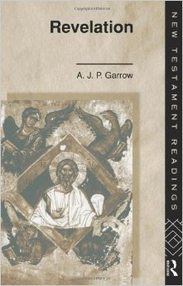| Alan Garrow Didache |
Revelation
Revelation - what's the problem?
 Doctor Who - king of the cliff-hanger Doctor Who - king of the cliff-hanger
It is often thought that Revelation is hard to understand because of its complex imagery. In reality, the problem is not that the characters look weird, but that they do things - and things happen to them - in a crazy order. This means that 'the story of what must soon take place', that Revelation promises to tell, ends up looking like an explosion in a scrap yard.
The story makes sense, however, if Revelation was designed to be performed in installments, each ending with a cliff-hanger: 'There is only one more seal to break ...', 'the seventh trumpet has just been blown ...', and so on. This means that only three sections of Revelation actually tell the 'story' (the contents of the Lamb's Scroll) - all the other parts have other jobs like: creating suspense, closing installments, opening installments and reviewing what's just happened. For a full account of the installment theory see AJP Garrow, Revelation (Routledge, 1997) Revelation - what is it?
An intriguing feature of Revelation's installments is that they close with an invitation to the Eucharist/Holy Communion (e.g. 'behold I stand at the door and knock ... I will come in and eat with them and they with me'.) They also include worship materials (e.g. 'Holy, holy, holy is the Lord God Almighty'). This suggests that the installments were meant to be performed as part of preparing to receive the bread and wine.
For more on the relationship between Revelation and early Eucharists see, 'The Didache and Revelation' in J. A. Draper and C. Jefford (eds.) A Missing Piece of the Puzzle in Early Christianity (Early Christianity and Its Literature 14, SBL: Atlanta, 2015) A video version of the paper 'Revelation Eruption', (BNTC 2022) is available here. This paper considers the date of Revelation and the identity of the First Beast (19 minutes). |
'Brilliant and original ... [Garrow] answers the disputed question of the contents of the sealed scroll.' John Sweet - Journal of Theological Studies 'In Revelation, Garrow makes an important contribution to the vexing problem of the literary structure of the book. ... Garrow's proposal is intriguing and perhaps even brilliant.' Journal of Biblical Literature |
